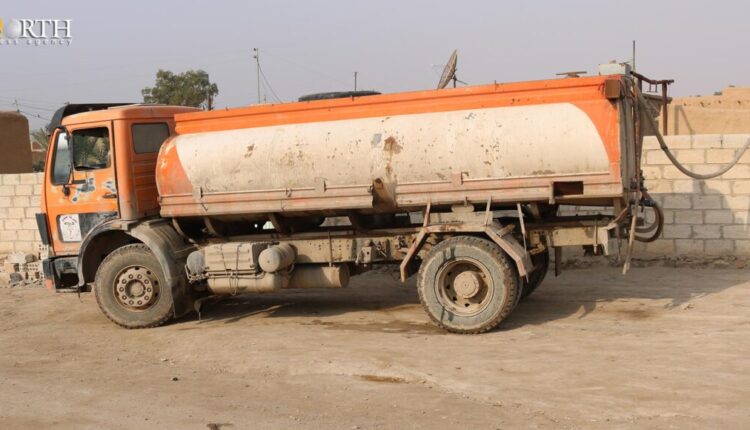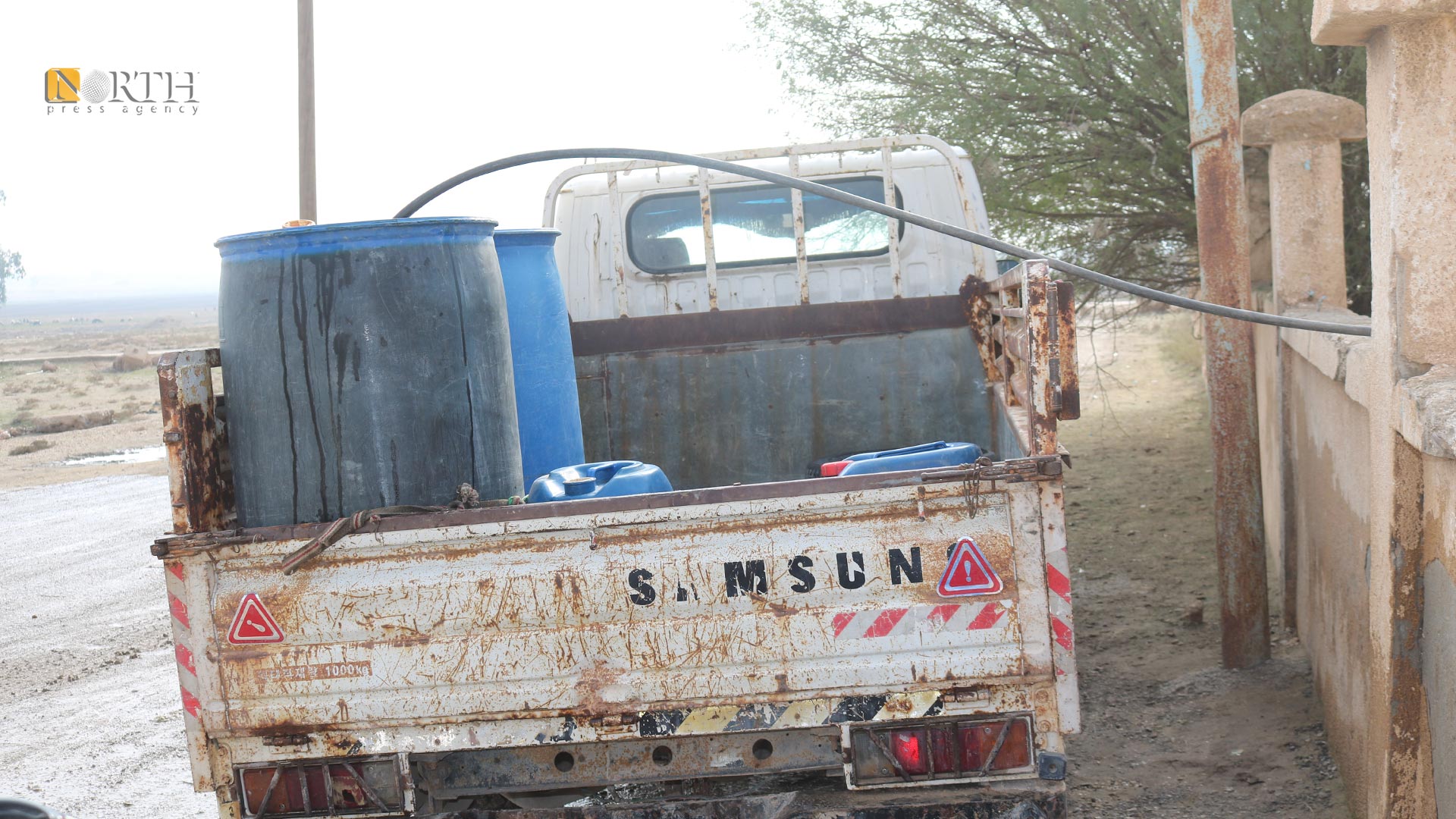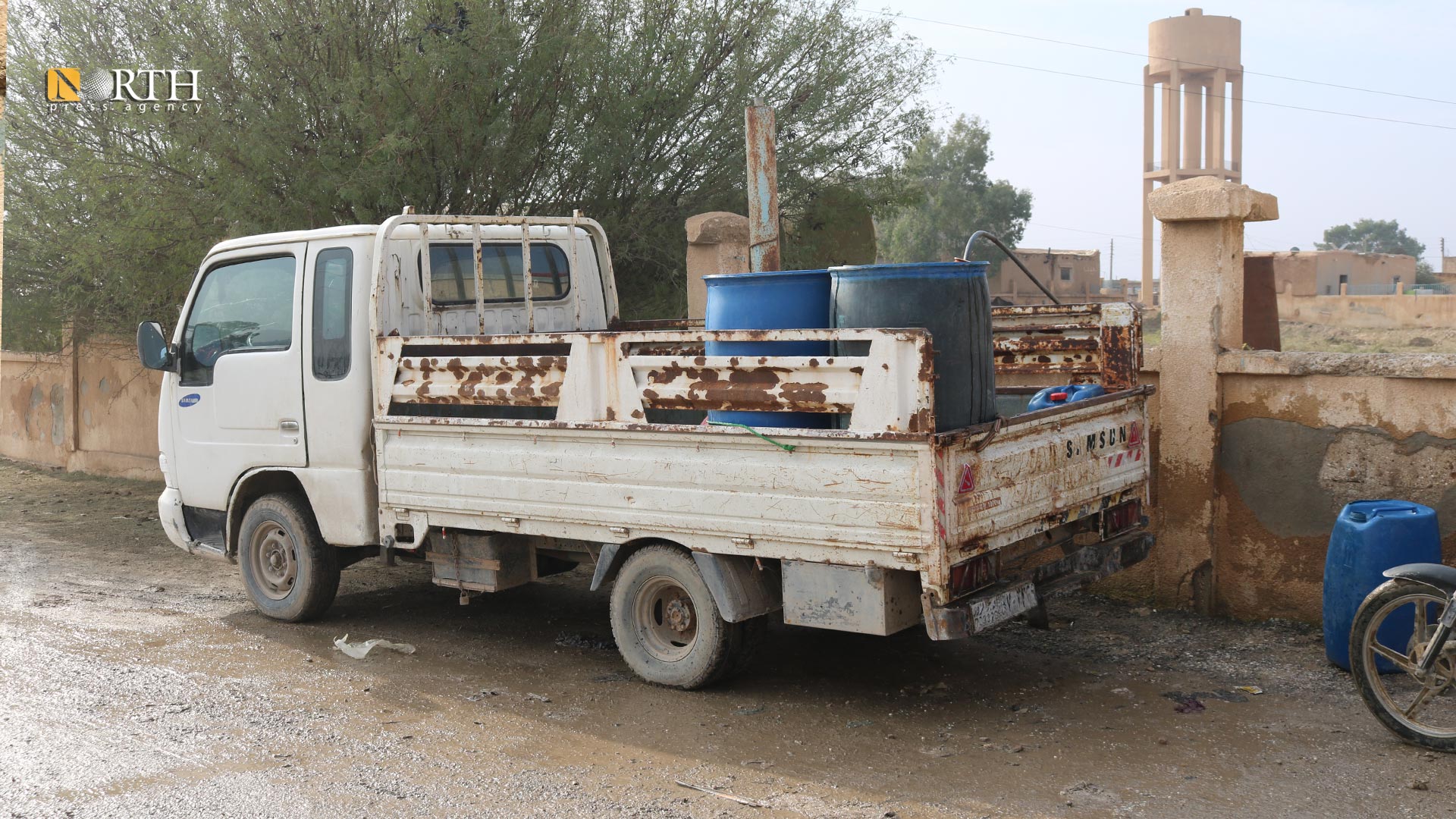
HASAKAH, Syria (North Press) – For many years, Rashid al-Hussein, 30, a resident of the town of Shaddadi in the southern countryside of Hasakah Governorate, northeast Syria, has entirely relied on water tankers to secure drinking water, due to the destruction and damage of water lines and networks during the battles and wars that took place in the area.
Every week, al-Hussein pays between 7.000 SYP to 15.000 SYP to fill a five-barrel (about 600 liters) water tank.
The water lines and stations were severely damaged during the era of the Islamic State Organization (ISIS) between 2014 and 2016 due to the battles that took place in the area at the time.
In February 2013, following fierce battles between the Syrian government forces on the one hand and the Syrian armed opposition factions and Hayat Tahrir al-Sham (HTS, formerly al-Nusra Front) on the other, the government withdrew from Shaddadi.

As a result, the infrastructure was devastated and the government facilities were looted.
A year later, ISIS attacked Shaddadi, resulting in fierce fighting between ISIS and the opposition factions, which lasted for days to end up with ISIS taking control over the town.
In 2016, the Syrian Democratic Forces (SDF), supported by the US-led Global Coalition managed to take control over Shaddadi.
Due to the ongoing water crisis in the town, the families have tried to cope with the crisis by buying privately supplied water from trucks, which complicated their already devastating living situation.
“For years, we have been relying on water tankers to get drinking water, despite the existence of water stations, but they need rehabilitation to enter service,” al-Hussein told North Press.
“Water lines and networks have been damaged for many years, and water sector officials are turning a blind eye on the issue, even though the municipality was established in 2017 and until this moment, the maintenance of the water networks has not started,” he added.
Al-Hussein pointed out that the water crisis exacerbates during the summer, since the usage of water is doubled, which increases the financial burden for families suffering from already deteriorated economic conditions.
Since 2016 until today, the residents are still suffering from the water problem, holding international organizations and the Autonomous Administration of North and East Syria (AANES) responsible for rehabilitating the water networks.
“The water scarcity adds another layer to the people’s suffering in the area. It also makes life harder for families to survive,” Juma’a al-Awad, 41, a resident of Shaddadi said.
Al-Awad added that it is necessary to rehabilitate the water networks in the town to solve the water problem.
Muhammad Saleh, an official at the Water Corporation in Shaddadi, told North Press that they had conducted general maintenance of the water stations in Shaddadi and Markada, and after that, they will start full studies of water lines and networks for maintenance soon.

The maintenance of these networks is scheduled to start in the next few months 2023, and the lines will be fed from the water stations that are fed from the Euphrates water project, Saleh noted.
The percentage of damage to the water networks in Shaddadi reached 40%, according to Saleh.
There are two water desalination plants in Shaddadi, al-Sina’a desalination plant with a capacity of 30 m³ per hour, and the desalination of al-Jibsa with a capacity of 30 m³ per hour.
